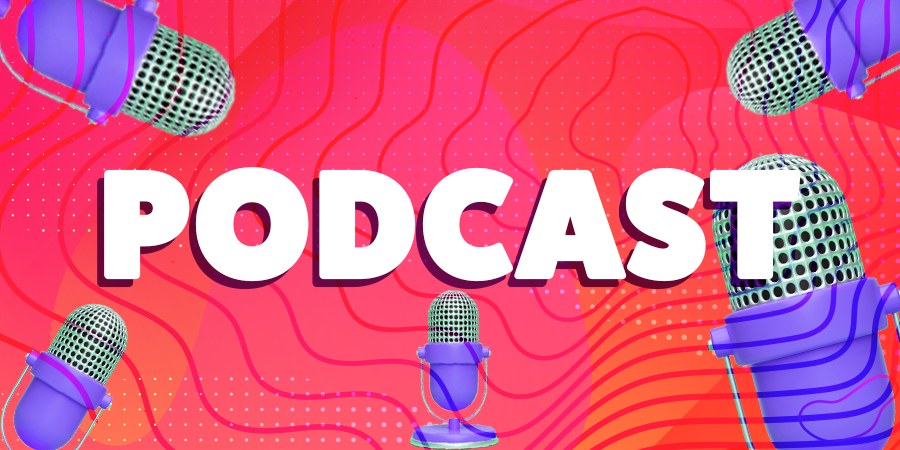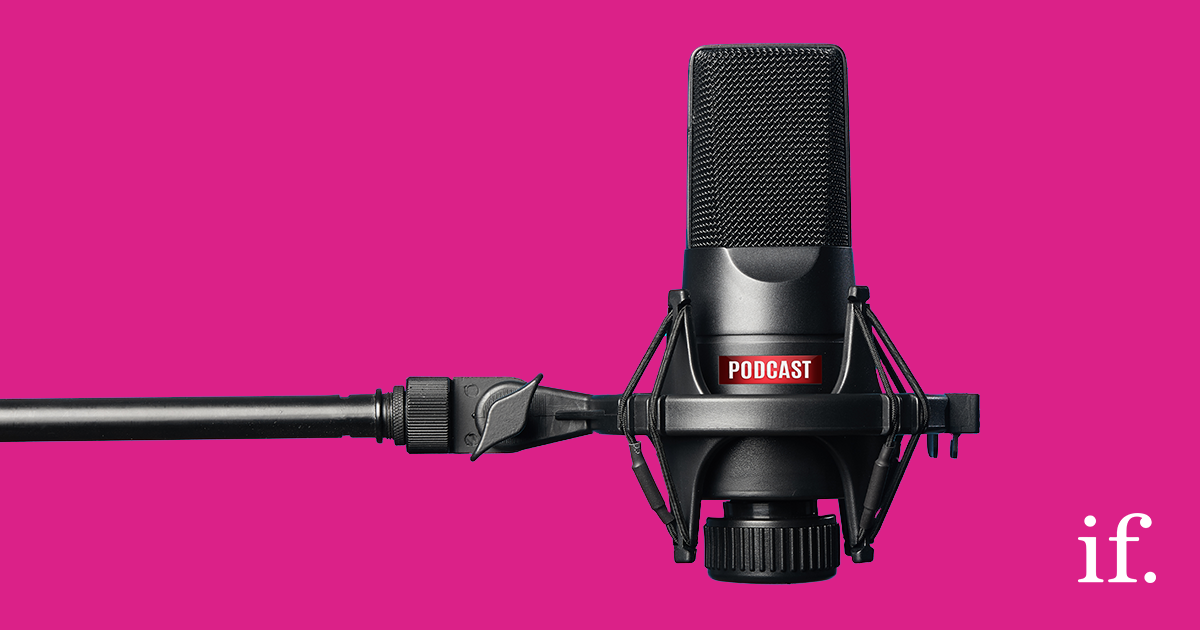Ep 53: Serious Social – The customer journey on social resembles a Jumanji map
Yes, we think your social customer journey is like the map in Jumanji, welcome to the jungle. In this episode of Serious Social, Katy Howell makes no apology for drawing parallels with the hit movie to explain the complexity and shifting landscape you need to navigate, to uncover customer touchpoints across social.
If you’re after more know-how to break the social boring, subscribe now.
Full Transcript
Welcome to the Serious Social podcast, created by the straight-talking social media experts at immediate future.
Yes, we think your social customer journey is like the map in Jumanji, welcome to the jungle. In this week’s episode, Katy Howell makes no apology for drawing parallels with the hit movie to explain the complexity and shifting landscape you need to navigate, to uncover customer touchpoints across social.
Welcome to serious social
Actually, it should be welcome to the jungle. The Jumanji Jungle. One of my favourite films, mostly because I adore Jack Black, but also because it’s filled with good-hearted humour. In the story, 4 teens get sucked into the Jumanji video game and have to complete a quest in order to break free. I won’t give away too much of the plot, so you can enjoy if you’ve not seen it before, but I do want to talk about the map.
The Jumanji map reveals itself in stages as the teens level up through the game. It’s filled with riddles and misleading signposts. It is a beautiful analogy for a social customer journey map.
And creating a customer journey map is essential if you want to deliver a brilliant customer experience. And next week, The CoOp, Business EQ and Sprinklr will be sharing their best practice and thoughts on social CX.
Back to the map. We all understand the journey steps – awareness, consideration, purchase, experience, loyalty and advocacy. We get that it can be a funnel or a loop or more realistically a scribbly wandering path to purchase.
Customer journey mapping is challenging at the best of times, but adding social into the mix, whilst essential, adds another layer of complexity. Many marketers tend to set up a single touchpoint of data. Usually around last click and conversions. But you need to be smarter these days. Your customers demand it. They want more.
The digital customer cares more about convenience, relevance, a seamless journey – they want experience and are not wedded to where they shop or how they buy – it is the whole relationship with the brand that matters. Consumers expect brands to know what information they need, regardless of where and how the interaction takes place.
But it isn’t just customers that are driving the need to maximise every touchpoint. Marketing itself needs to be sharper.
Let’s take one element, social advertising. Facebook and Instagram ad spend is up 60% on last year and Advertising costs on social platforms grew more than 30% across the board. Ad space is more competitive. You need to fine-tune and optimise across the journey if you are going to deliver business growth, without continuously upping your budgets to beat bid prices that are escalating as demand rises.
The answer is in understanding all the potential interactions and mapping the touchpoints that a person may have with a brand. That way marketers can tailor the connections, maximise relevance and build a proposition that efficiently joins up the journey to deliver better results.
- Before we start on social mapping, you need to look across all your customer touchpoints. You need to see how social is connected to your TV campaigns, your press, your eCommerce site, your delivery and the impact it has on search. You need to understand how and why audiences bounce between social, search, websites, stores and so on.
The purchase journey’s becoming more fragmented, with each audience using multiple channels and media to find answers. And you need to factor in the darker channels. Radium One estimates that 84% of sharing of content is happening outside of social networks, on channels like email, instant messenger and SMS.
It is imperative to understand that social is leaky. It spreads and connects all your channels.
Social Holds the power. Digital Marketing Magazine says that 74% of consumers rely on social media to guide their purchases. And 60% of people say that they interact on social media with the brands they buy from. Social media holds more power with consumers than ever before.
And this is why a specific map is needed for social. It is the fulcrum or the hub of all your communications.
With the wider map in place, you can look at your Jumanji-like social map. Jumanji-like, because in order to determine the touchpoints you need to work in a way that unravels each section and reveals the clues to the next step. You are on a quest to find out how consumers navigate through, and in and out of social and how that impacts the journey.
Let’s start by dispelling the myths that social media is a) one channel or touchpoint – it is not, it is a bunch of different channels in different formats targeting different audiences who have a very clear idea of the purpose each channel provides them.
And b) that social is only valuable top or bottom of the funnel. In other words, it is only useful for awareness and driving traffic and leads. The salesforce latest ‘state of marketing’ report clearly shows social is active in consideration, research and recommendation phases and all the way through to the other side of purchase with customer reviews, advocacy, retention and customer care.
So how do you create a social map?
Before you get into the data, you need to step back and look at your personas. The reason is that each persona will have a different journey. Parents looking to purchase a family car will have a very different journey, intentions and motivations to that of a newly minted driver purchasing their first car. In my experience, too many audience personas and segments sit in dusty cupboards unused or focus solely on demographic outlines that are too sketchy to differentiate.
But in truth, you cant create a map, if you don’t know where you’re going and who you’re going with. Every target audience segment has a different path to purchase. So start here.
The next important element is the data. Social listening goes beyond looking at mentions of your brand or your competitors. Did you know for instance that according to brandwatch 96% of online conversation is unbranded brand-agnostic research. And for those marketers just evaluating their followers, research shows that 96% of the people that discuss brands online do not follow those brands’ owned profiles.
You need to throw the net a lot wider. You want to uncover the complete picture, understand all the touchpoints. And to do that you need to think about social intelligence. Look at the conversations in your sector. Understand how people talk about your industry products or services.
Blend social data with insights from market research or customer surveys. The wonderful thing about social data is that it captures public and unprompted conversations. It lets you delve into the psyche of your audience and see how customers use social to inform their intentions to buy. The downside is that the data is unstructured, and it takes time to get it into a framework. But once done, there are such insights to be had. Did you know you can plot conversations against the customer journey? We shared the social journey to travel purchase before the pandemic. We were able to identify how on social, the optimum booking time for the next holiday, was just after going on one and coming home and sharing lots of pics and stories on social. Of course, the journey differs by persona, by sector and product, but you get the gist. You can uncover how your consumer wants to interact with you and the optimum ways to do so.
With your map plotted with data you can now start to look at where you can effect change. But wait. That Jumanji map has changed.
Social platforms evolve quickly; the content trends, formats and algos shift constantly. Every time a new feature is rolled out, your business has another way to connect with its audience.
The platform changes and launches of course have an impact – just look at how clubhouse has pushed a landgrab for audio amongst Twitter and Facebook. But that isn’t what you need to watch when revising your map. It back to your customer behaviours. That is where you look first. How is it changing the way they make buying decisions? So once you have that data framework from the touchpoint mapping phase, you want to hang on to it. And keep reviewing it.
But that is not enough in social. You need to keep testing. Continuous test and learn means you don’t have to go back to the drawing board every time something changes instead the rhythm of trailing, becomes a way to keep a close eye on behaviours and be ready to leap on any changes
So, with your audience journey mapped, and a rhythm in place for keeping it fresh and flexible around channels, what else is there. Well, I mentioned many times before that social is leaky. And I said you should map the wider journey first. That is because so often the next step in the journey from social is broken.
For example, you see a post about a great pair of shoes. You’re inspired and click on buy now or learn more. You land on the home page. A rookie error. You got me excited enough to leave my network and then let me down. Guess what I do. Swipe back to the social network and forget all about you.
Part of the planning will help you identify these critical touchpoints. It could be integrating your PPC strategy with social to ensure people who are inspired on social can find you again fast. Or it’s the smarts to connect up your marketing with customer service to build a consistent experience or you may find that a request on email for social reviews are where you can trigger action.
Identify the buying stages that need attention. Where they go and what do they once in social. And in some cases they may well stay in social to make the purchase – that means thinking about how they can do so easily and, how they can share the purchase with friends and family.
And you need to make this shift from one touchpoint to another as frictionless as possible. Deloitte reports that 29% of social media users are more likely to make a purchase on the same day of using social media. That means that once they see a product, they click and they buy. The report also says consumers who are influenced by social media are four times more likely to spend more on purchases.
There is every reason then to get granular with each element of the journey. These are holes in your map that prevent your customers from moving into the purchase and post-purchase stages.
The aim of your social customer journey map is to enable you to create an experience that captures attention in all the right places, builds relationships, and moves your customers ever closer towards the end goal.
Knit together your map with emotions, behaviours and trends and you are able to define and design your customer experience. Do join us on the webinar next week.
I do hope that was helpful. Mapping is complex and challenging. But you can Jumanji that journey by looking at the data, building in flex for changes and ensuring your social journey connects and joins up with your wider marketing efforts.
Have a cracking weekend and we’ll be back next week with another serious social.
If you’re after more know-how to break the social boring, subscribe now and check out the show notes for links to our website and social profiles.




